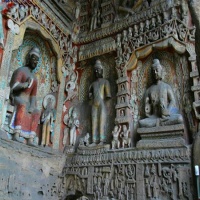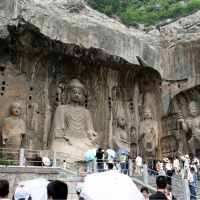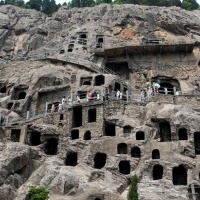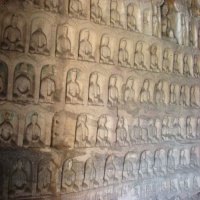- Home Page
- Fact Tours
Our sample tour itineraries of China and China travel packages are sorted by theme and available at competitive prices, you can browse what tours are right for you for your trip to China.
Popular China Tour Packages

Custom Tour Packages to China and Ask Our Experts for Free Enquiry !
- Coach Tours
- Destinations
Beijing, the capital of China. Its art treasures and universities have long made it a center of culture and art in China.
Beijing Top Attractions
Beijing City Tours
Best China Tours with Beijing
Shanghai, the cultural and economic center of East Asia. It renowned for its historical landmarks, the extensive and growing skyline.
Shanghai Top Attractions
Shanghai City Tours
Best China Tours with Shanghai
Xi'an, having held the position under several of the most important dynasties. It is the top destination to explore the facts of Chinese history.
Xi'an Top Attractions
Xi'an City Tours
Best China Tours with Xi'an
Huangshan boasts its culture, beautiful rivers, villages and mountains. It's home to 2 UNESCO World Heritage Sites and the Mecca of photographers.
Huangshan Top Attractions
Huangshan City Tours
Best China Tours with Huangshan
Sichuan is the cradle of the Shu culture, panda, mahjong, teahouse and spicy food. The province ranks first in China by number of UNESCO World Heritage Sites. It is called "the Heaven of Abundance".
Sichuan Top Attractions
Sichuan Tour Packages
Best China Tours with Sichuan
Yunnan, literally means the south of colorful clouds, due to its beautiful landscapes, mild climate and diverse ethnic cultures and traditions, is one of China's major tourist destinations.
Yunnan Top Attractions
Tibet, the nearest land to the sky, is known for its breathtaking landscape, splendid culture, art, buildings, and mysterious religions.
Tibet Top Attractions
Tibet Tour Packages
Best China Tours with Tibet
Explore the lost civilizations by riding a camel! Travel across the Gobi and the desert, and over the high mountains. Our Silk Road tours including different sections of the Silk Road in China.
Silk Road Top Attractions
Silk Road Tour Packages
Best China Tours with Silk Road
Guilin, an internationally-known historical and cultural city, has long been renowned for its unique karst scenery. Its vicinities are the paradise of hiking, caving, rafting, biking and countryside exploring.
Guilin Top Attractions
- China Facts
- China Hotels
- Travel Photos
Attractions
Yungang Buddhist Caves
 The Yungang Caves or Grottoes are ancient Buddhist temple grottoes near Datong City of Shanxi Province. They are excellent examples of rock-cut architecture and one of the three most famous ancient sculptural sites of China. The others are Longmen and Mogao.
The Yungang Caves or Grottoes are ancient Buddhist temple grottoes near Datong City of Shanxi Province. They are excellent examples of rock-cut architecture and one of the three most famous ancient sculptural sites of China. The others are Longmen and Mogao.
The site is located about 16 km south-west of the city, in the valley of the Shi Li river at the base of the Wuzhou Shan mountains. The grottoes were mainly constructed in the period between 460-525 AD during the Northern Wei dynasty. They are an outstanding example of the Chinese stone carvings from the 5th and 6th centuries. All together the site is composed of 252 grottoes with more than 51,000 Buddha statues and statuettes. In 2001, the Yungang Grottoes were made a UNESCO World Heritage Site The Yungang Grottoes is considered by UNESCO a "masterpiece of early Chinese Buddhist cave art...represent the successful fusion of Buddhist religious symbolic art from south and central Asia with Chinese cultural traditions, starting in the 5th century CE under Imperial auspices.
History After the decline of the Jin Dynasty, the northern parts of China came under the control of the Northern Wei dynasty, ruled by a proto-mongolic tribe called Tuoba. They made the city of Pingcheng, now known as Datong, their capital. Due to its promotion, Pingcheng saw an increase in construction work. The Northern Wei early adopted Buddhism as their state religion. Buddhism arrived in this location via travel on the ancient North Silk Road, the northernmost route of about 2600 kilometres in length, which connected the ancient Chinese capital of Xian to
After the decline of the Jin Dynasty, the northern parts of China came under the control of the Northern Wei dynasty, ruled by a proto-mongolic tribe called Tuoba. They made the city of Pingcheng, now known as Datong, their capital. Due to its promotion, Pingcheng saw an increase in construction work. The Northern Wei early adopted Buddhism as their state religion. Buddhism arrived in this location via travel on the ancient North Silk Road, the northernmost route of about 2600 kilometres in length, which connected the ancient Chinese capital of Xian to  the west over the Wushao Ling Pass to Wuwei and emerging in Kashgar before linking to ancient Parthia.
the west over the Wushao Ling Pass to Wuwei and emerging in Kashgar before linking to ancient Parthia.
The work on this first period of carving lasted until the year 465 AD, and the caves are now known as caves 16 - 20. Beginning around the year 471 AD, in a second construction phase that lasted until 494 AD, the twin caves 5/6, 7/8, and 9/10 as well as the caves 11, 12, and probably 13 were constructed under the supervision and support of the imperial court. The imperial patronage ended 494 AD with the move of the Wei court to the new capital of Luoyang. All other caves emerged under private patronage in a third construction period, lasting until 525, when the construction came to a final halt due to uprisings in the area.
 Since the end of the works, the sandstone of the grottoes is exposed to heavy weathering. The ensuing centuries therefore saw several attempts to preserve the caves and to repair sustained damage. During the Liao Dynasty the caves saw some renewing of statues and the buildup of the "10 temples of Yungang" from 1049 to 1060, that were meant to protect the main caves. However, they were destroyed again just some 60 years later in a fire. 1621, during the early Qing Dynasty, brought the construction of the wooden buildings that still can be seen in front of the caves 5 and 6. Since the 1950s, cracks in the sandstone have been sealed by grouting, and there are efforts to reduce the weathering due to sandstorms by forestation.
Since the end of the works, the sandstone of the grottoes is exposed to heavy weathering. The ensuing centuries therefore saw several attempts to preserve the caves and to repair sustained damage. During the Liao Dynasty the caves saw some renewing of statues and the buildup of the "10 temples of Yungang" from 1049 to 1060, that were meant to protect the main caves. However, they were destroyed again just some 60 years later in a fire. 1621, during the early Qing Dynasty, brought the construction of the wooden buildings that still can be seen in front of the caves 5 and 6. Since the 1950s, cracks in the sandstone have been sealed by grouting, and there are efforts to reduce the weathering due to sandstorms by forestation.
Questions & Comments
Home | About Us | Partnerships | Terms & Conditions | Privacy & Security | Payment Guide | Resource Links| Sitemap
Email: contact@chinafacttours.com, Tel: +86-773-3810160, Fax: (+86) 773-3810333
Copyright © 2008-2020 China Fact Tours. All rights reserved
![]()









